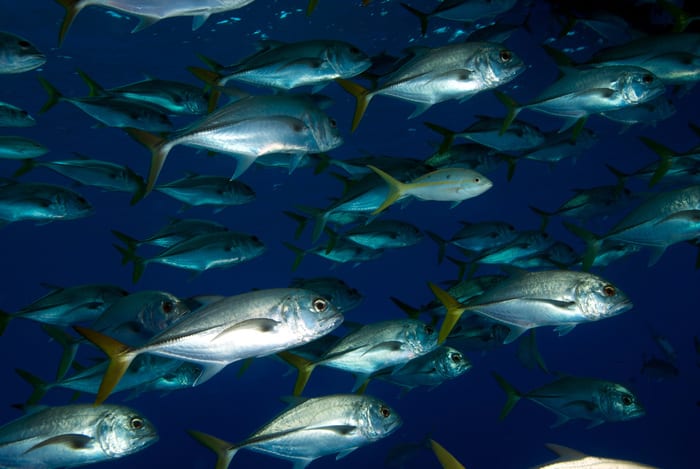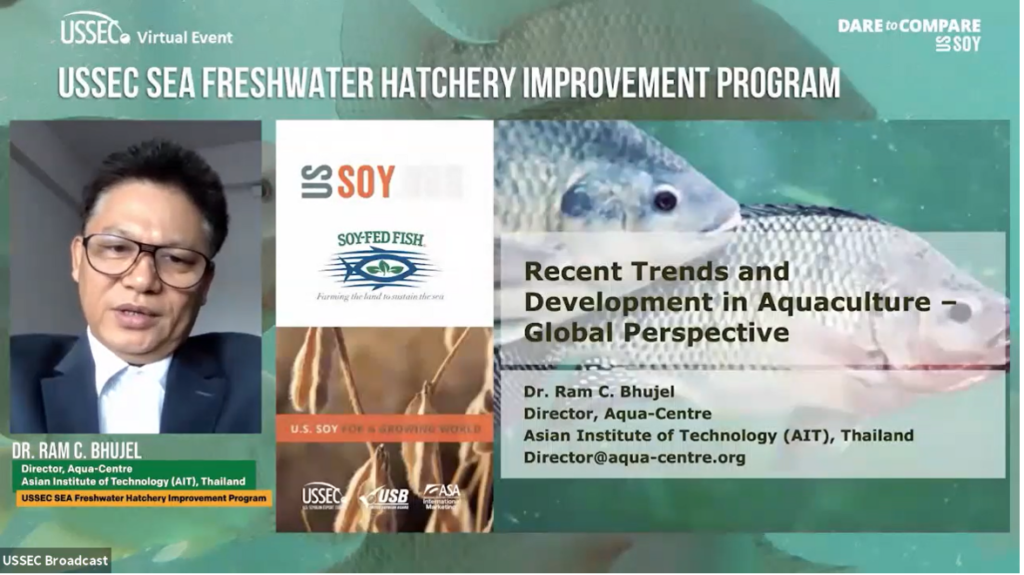Southeast Asia Aquaculture Customers Gain Value from Freshwater Hatchery Improvement Webinar
- Category:
- Aquaculture
- General News

The region’s aquaculture team conducted USSEC’s Southeast Asia Freshwater Hatchery Improvement webinar over four days last month, July 13-14 and 21-22. Attendees represented government and private freshwater hatcheries, research institutions, and aqua feedmills; fish farmers also took part. 133 people participated on the 13th, 112 on the 14th, 85 on the 21st, and 77 on the 22nd.
The webinar’s objective was to share new information on basic requirements and technologies for upgrading and improving the regional freshwater hatchery industry, particularly for tilapia, catfish, pangasius, and carp. The region’s aquaculture industry needs this assistance for better quality and larger quantities of freshwater fry and fingerlings and to support the requirement for large quantities of high-quality advanced fingerlings needed by In Pond Raceway System (IPRS) technology.
USSEC Senior Technical Consultant – Aquaculture for Southeast Asia Lukas Manomaitis presented “Introduction to USSEC and the Freshwater Initiative,” summarizing the importance of this program for quality and quantity of tilapia, catfish, pangasius, and carp fry and fingerlings for the IPRS program during each of the program’s four days. He also stressed the importance of U.S. soy products in aquaculture and seafood, various U.S. soy products available for aquaculture feed nutrition and production, and sustainable U.S. soy products in feed production for sustainable aquaculture and seafood.
Dr. Ram Bhujel, director, AQUA Centre, Asian Institute of Technology (AIT), Thailand presented “Recent Trends and Development in Aquaculture in SEA and Global Perspective” and “How to Produce Millions of Best Quality Tilapia Fry,” discussing the latest technologies in tilapia hatchery and nursing on the first day, July 13. On the second day, Bhujel presented “African Catfish Breeding and Hatcheries,” examining the latest technologies in African catfish hatchery breeding and nursing. On July 21, Bhujel presented “Pangasius Breeding and Hatcheries” and wrapped up the last day with “Carp Breeding and Hatcheries.”
After each day’s presentations, USSEC held a question and answer session for nearly one hour, moderated by Levy Manalac, aquaculture technical consultant for Southeast Asia and the Philippines.
Webinar attendees provided positive feedback.
“It is good [to learn] technical things based on practical experiences. . .in this program,” said Kyaw Moe Oo of World Fish Myanmar. “I would like to recommend hatchery improvement and grow-out culture for other commercial species like shrimp, seabass, snakehead fish, etc.”
“[These] techniques improve my capacity as [a] hatchery technician,” stated Brando Padron, Provincial Aquaculture Office.
Upgrading and improving the regional freshwater hatchery industry will increase fish production, ultimately increasing the feed requirement and demand for U.S. soybean meal and other U. S. soy products.

Dr. Ram Bhujel, director, AQUA Centre, Asian Institute of Technology (AIT), Thailand presents “Recent Trends and Developments in Aquaculture – Global Perspective